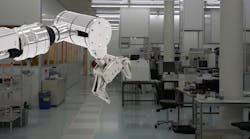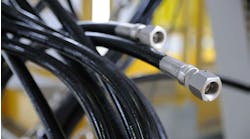According to analysis released by Reports and Data in late 2021, the cleanroom robot market will increase at a compound annual growth rate (CAGR) of 12.1% through 2028. This will enable the market to reach a value of $12.06 billion.
Use of robots is increasing in these applications as manufacturers look to adopt more automation and improve the cleanliness of their operations. Reducing the amount of people working in the area reduces the chances for contamination and the need to conduct cleaning, which can improve productivity.
Reports and Data also notes the growth of medical and consumer electronics driving the need for robots to meet the needs of highly sensitive applications and stringent cleanliness standards.
Deployment of robots in general has grown over the past few years. A May 2022 Insider article reports orders for robots increased 40% in the first quarter of 2022 and were up 21% in 2021. A key driver for this is the tight labor market which was exacerbated during the COVID-19 pandemic.
Jerry Perez, executive director – Global Accounts at FANUC America Corporation, agrees the pandemic helped drive growth in robotics, including for cleanrooms, not only to aid with labor but also the rise in e-commerce which took place during that period, as well as the need for medical supplies such as test kits.
He said during a webinar panel discussion with Power & Motion that FANUC has experienced record growth in the past two years and economists are projecting continued growth for robotics over the next decade.
How Robots Can Benefit Cleanliness
Removing the human factor is the key advantage to deploying robots in cleanroom and other applications requiring a high degree of cleanliness, said Perez. Doing so reduces the chances of particles and other contaminants from causing potential issues.
Perez also noted the ability to reduce the amount of sanitization equipment that may be needed on site, which helps to reduce overall production costs as well as time spent cleaning.
To ensure the cleanliness of the robots themselves, the design of the robot is an important factor. As such, companies like igus are developing components which are durable and eliminate the need for lubrication.
Dylan Pollack, pobotics product specialist at igus, Inc., said during the Power & Motion webinar that many of the components developed by the company for robots are lubricant free and feature a high level of corrosion resistance. Doing so minimizes the amount of maintenance necessary on the robots, which not only benefits productivity but also keeps people from entering the cleanroom environment and causing potential contamination issues.
The needs of the application will determine the design of the robots utilized. For particularly sensitive applications the robots and their components may be specially sealed and equipped with stainless steel hardware, noted Research and Data in its press release announcing the release of its cleanroom robot market report. The research firm also noted a focus on ease of use when developing robots for these types of applications to ensure they can easily be integrated into operations and maintained.
Pollack said igus offers robotics components with chemical-rated resistance and FDA (U.S. Food and Drug Administration) approved bearings, which can be beneficial for use in robots for various applications requiring a high degree of cleanliness.
Automation Aids Productivity
Automating processes through the use of robots can bring many benefits to manufacturers. In addition to helping overcome the labor shortages many face, robots can provide productivity improvements.
Robots, like other automated machines, are designed to do repetitive tasks in a consistent manner which helps to ensure work is done correctly without rework. They can also provide enhanced speed and repeatability, further benefiting productivity. And with robots doing some of the work, personnel can be freed up to do other work.
Handling of smaller components such as electronics is another benefit offered by robots. They can often better grip the parts than humans while moving them at speed which ensures productivity is maintained. Use of robots for electronics production also ensures there will be minimal contamination, as these parts are often very sensitive to the smallest of dust or other particles.
Because of these capabilities, use of robots is growing for production of semiconductors which are in high demand today. In 2019, ABB Semiconductors automated its semiconductor testing and production operations. It did so to help improve the efficiency of its operations and ensure it could continue producing the components at its existing facility.
According to the company, production of its BiMOS semiconductor was labor intensive and caused bottlenecks in the production line when there were periods of high demand. Introduction of robots and automated processes to its cleanroom environment for the semiconductors helped overcome this by reducing the number of people required in the room—reducing downtime caused by putting on appropriate cleanroom gear and conducting other cleaning operations.
The cleanroom is space-constrained as well. Robots, however, are smaller in size and therefore more easily able to safely maneuver and work in such environments.
By introducing robots and other automated features, ABB was able to improve the quality and production process for its semiconductors.
Research and Data is forecasting North America and Asia-Pacific to be the regions with the highest growth rates for robotics in the coming years. North America had the largest revenue share in the global market in 2020, which is expected to continue as more companies look to update and automate processes.
Asia-Pacific is forecast to achieve the fastest revenue growth as the need for cleanrooms for semiconductor and other electronic component manufacturing increases in the region.
Perez concluded by noting the cleanroom robot market is a mature one. So not only will there be growth from new applications in which the robots can be used, but also replacement of older technologies with new, more advanced robot designs which will benefit the market and those who supply components to it.


